In the course of a classic car restoration, the paintwork is
of particular importance, because here every mistake, no matter how
small, spoils the final result. Even superficial scratches look like
deep furrows in the right light and amateurish touch-ups immediately
stand out.
Painting work requires not only years of experience but also a great deal of professional equipment. That's why our warmest recommendation is: the higher your demands on the result of the paintwork, the more you can spend on it. You can find out here what your vehicle will have to undergo in a specialist workshop and what preparatory work and smaller paint jobs you can still do yourself, so read on!

Position: Sales
Updated: 31.05.2021
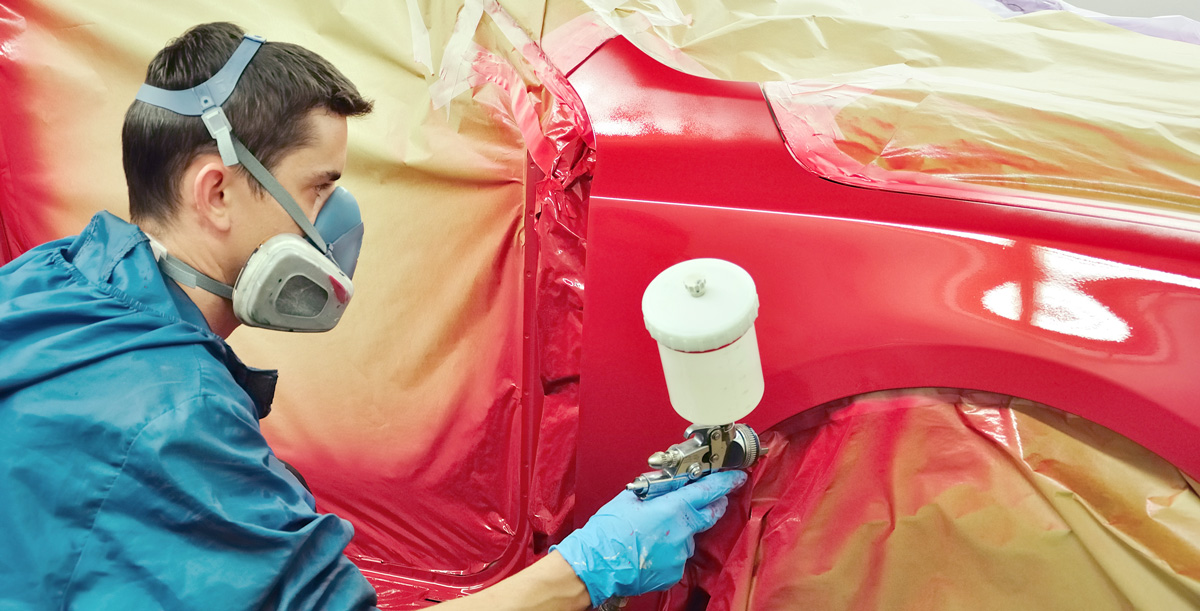
What distinguishes a professional classic car paint job?
The painting of historic vehicles, like all work on classic cars, requires sound specialist knowledge and the necessary sure instinct. Historic coatings have their very own special features and even when it comes to determining the colour shade, classic car painting requires specialist knowledge and practical skills from the painter.
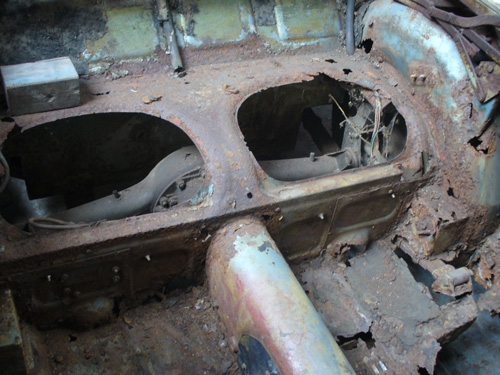
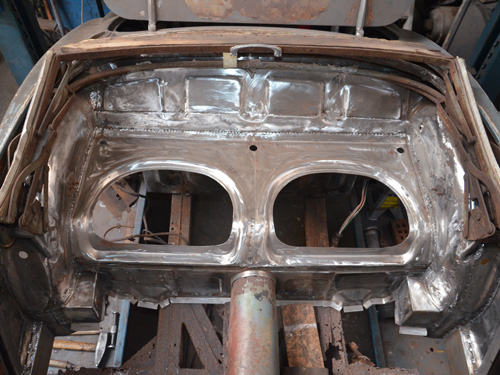
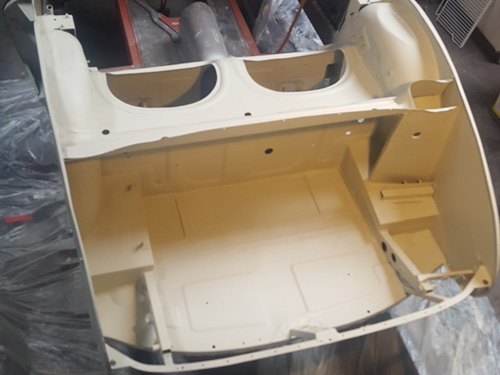
Photos: Wolfgang Flaeschner
What is the procedure for painting a classic car?
Painting work requires the highest precision and some experience. Established masters in their field have their very own techniques. And the materials, techniques and regulations regarding the ingredients of paints, solvents, etc. also change over the years. Therefore, you will not find precise step-by-step instructions for painting classic cars here, but simply an overview of the procedure, possible pitfalls and a few tricks.
Expose and prepare the subsoil
Some
sand the body down to the sheet metal and prepare the classic car in
such a way that subsequent filling is no longer necessary, while others
like to leave old paint residues that have grown firmly into the car, as
they claim there is no better substrate for a new paint job.
However, if the old paint is cracked, flaking and your car has many rust spots,
then it really should be sanded down to the sheet metal. Various old
paints on the car must also be tested for compatibility with new
solvents. To do this, you usually just put a soaked cloth on the spots
and wait a few minutes. If you see bubbles or soft spots, the old paint must come off!
This preparation will also save you a little money at the workshop, which you should visit at the latest when it comes to pretreating the car for the final classic car paint!
Remove rust from the bodywork
The complete removal of rust from your classic car is one of the most important steps in the restoration of a classic car and can be done mechanically or chemically. Rust removal is also a job that can be carried out on the vehicle by experienced amateurs and hobby mechanics.
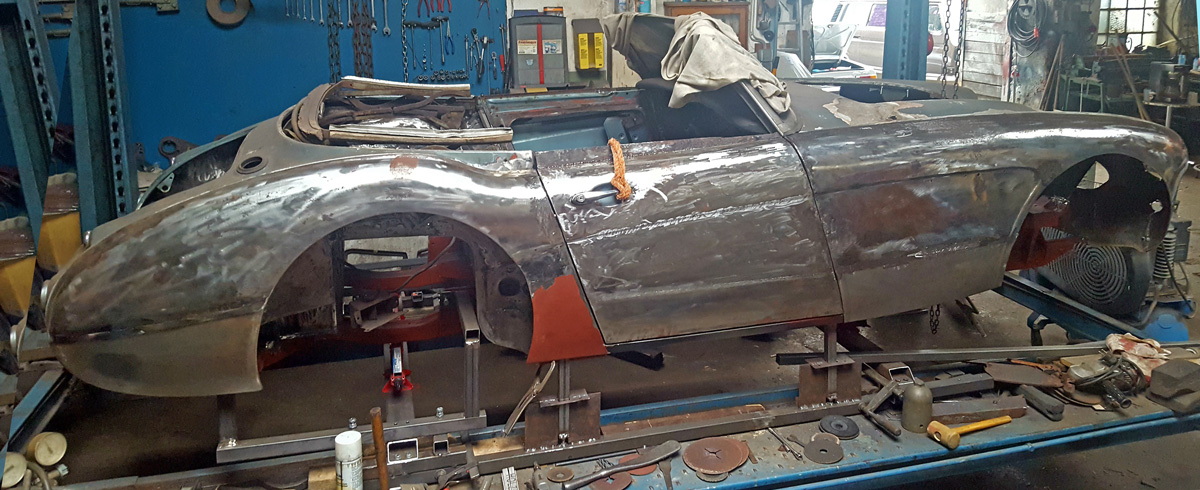
With a sandblasting gun, even the smallest rust stains can be removed from easily accessible places without unnecessarily distributing blasting material.
Caution: Even with proper treatment, the impact of the blasting material can lead to negative side effects such as excessive temperatures and distortion, loss of tension in the sheet metal skin and excessive material removal, which then causes the sheet metal to become brittle. Therefore, a professional and targeted use of this technique is a prerequisite.
The derusted areas are then coated with an epoxy primer for classic cars to prevent new rust from forming. Afterwards, the bodywork is also protected with an epoxy resin primer, as it is called in German, on all areas that have been worked on.
Pre-treatment for the classic car paint
In the next step, all surfaces are thoroughly cleaned of oil, grease residues, silicone and wax - appropriate solvents help here. Then cover all parts that should not come into contact with paint. Attachments such as door handles, covers and protective strips should also be removed before starting to paint the classic car.
Now the body can be pre-treated with a primer. This guarantees good adhesion for all subsequent layers. If the classic car shows unevenness in the sheet metal, it is necessary to level it out after dent removal with a filler or, in the case of larger dents, with putty. It is almost always necessary to sand and fill again after curing.
This is because the finished paint mercilessly reveals even the smallest indentation. In order to detect even the smallest unevenness in the sheet metal, a very thin layer of paint is applied with a spray can or a so-called control powder after the initial filling in suspicious areas, such as the curves around the mudguard.
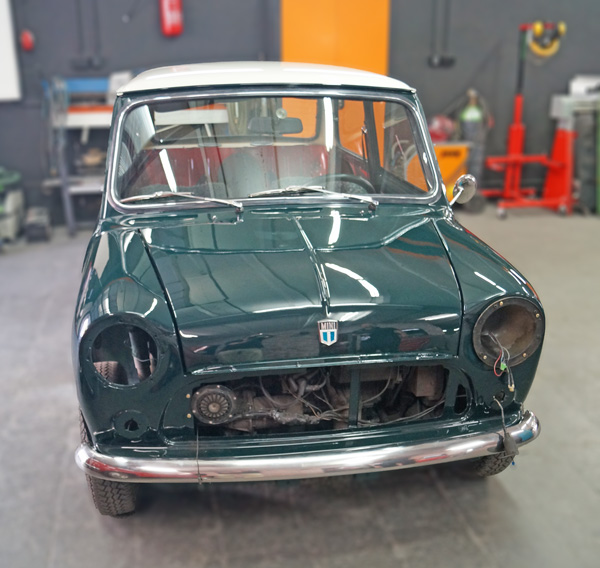
To prevent unsightly edges between filler, sheet metal and old paint when painting classic cars, a thin layer of epoxy resin primer is pre-painted. This allows the subsequently applied filler to close the fine scratches of the 240 sandpaper and thus smoothes out transitions between the old paint and the body surfaces.
When enough filler has been applied and filled, the classic car surface is finally smoothed, for example with a 600 grit when sanding by hand. With the highest-quality eccentric sanders, grits of 360 and 400 can be used, at the price of higher dust formation. For hand sanding, 600 grit is the usual wet grit.
The finale of the classic car paint job: the top coat
And only now does your classic car get its new paint and, after several weeks of preparation, may finally shine in new splendour. However, the utmost care must be taken during this step! When painting, the environment must be free of dust - including the painter's clothes!
An outdoor place is also absolutely unsuitable when it comes to the top coat, because dust and insects are constantly flying through the air here. Avoid draughts as well, as they deflect the spray.
Slowly work your way up from painting small parts with a spray can to painting entire components with a gun. With a few parts of experience, you will get a feel for spraying speed, amount of paint, coverage and possible mistakes. However, if you work cleanly, start at the edges and apply the paint regularly as well as thinly, you can basically hope for solid results!
Original or fashionable: Which classic car paint fits?
Modern
water-based paints have completely replaced the use of paints with
organic solvents. Since 2007, the handling of paints with organic solvents has been strictly regulated throughout the EU - in the case of historical rarities and museum vehicles, however, the legislator allows exceptions for painting classic cars.
For repairs, most uni paints today still contain solvents. Many bodyshops use solvent-based paints at least as basecoats because of the shorter drying times. The paint box can be filled at shorter intervals.
If you are one of those people who fear that a new and modern paint job will change the soul of your classic car, we can reassure you. Because just as with a restoration in which original spare parts are used, a fresh classic car paint does not detract from the classic car status or its flair.
Painting classic cars: Costs
Classic car painting is time-consuming and expensive. Depending on the vehicle and its condition, a full restoration paint job costs somewhere between 5,000 and 8,000 euros, but the lower limit is at least 1,500 euros. This includes the value of the materials as well as the hours of work, because painting can easily cost as much as 3-digit hours and the paint material can cost up to 2,000 euros, depending on the amount and colour.
Caution: In some places, cheaper workshops in Poland or the Czech Republic are recommended. Of course, there are black sheep everywhere, but many companies in Eastern Europe work cheaply and reliably. But the long journey and possible communication difficulties often put the price advantage into perspective.
Many classic vehicles have already been restored once. Ensuring technical compatibility between paint systems used at different times requires long experience and extensive technical understanding.
A paint finish is not static. Primers shrink, they collapse, and sanding marks that have been filled away become visible again. A very special case is plastic car bodies, which even after decades still emit solvents that cast visible bubbles in the top coat.
These factors all have an impact on the cost of a classic car paint job - but as you've learned, you can save quite a bit of money by doing the rust removal and pre-treatment work yourself!
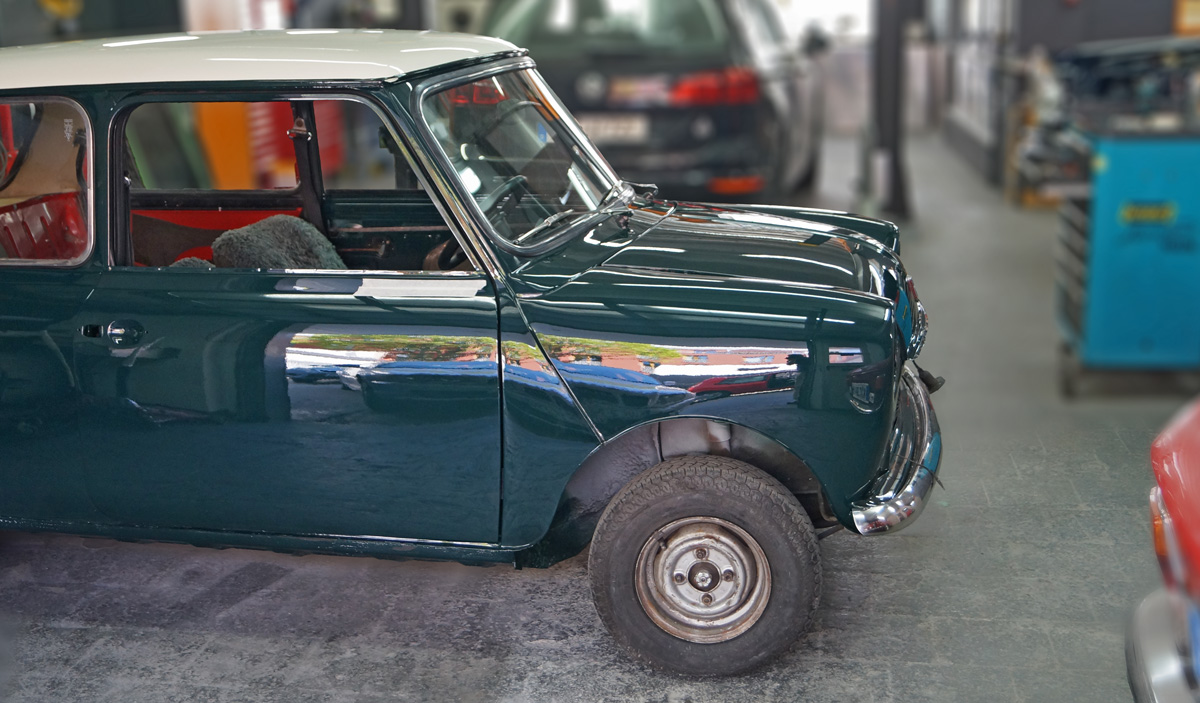
Painting classic cars: Our conclusion
Painting a classic car involves a lot of work and believe us: it is best to leave this work to a professional. Not only is the classic car paintwork visible immediately and directly, unclean earlier work can also come to light, which must be expertly touched up again or compensated for - in some cases even by yourself! This is the only way to ensure a perfect symbiosis of bodywork and paintwork that will make your classic car and yourself shine!